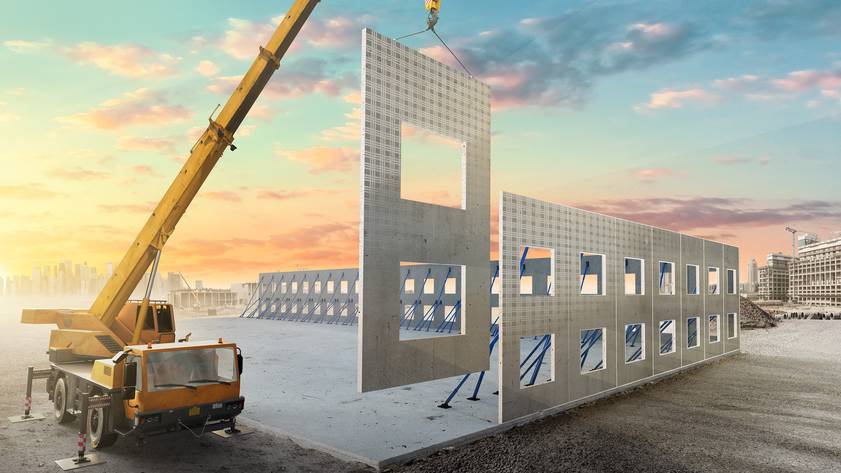Cost-Effective Living: The Economic Advantages of Prefabricated Construction

In today's fast-paced world, where time and money are of the essence, prefabricated construction has emerged as a cost-effective solution for building homes and structures. This innovative construction method involves assembling building components in a factory setting and then transporting them to the construction site for final assembly. Prefabricated construction offers numerous economic advantages that make it an attractive option for homeowners, builders, and developers alike.
Reduced Construction Time
One of the primary economic advantages of prefabricated construction is the significant reduction in construction time. Since the building components are manufactured in a factory-controlled environment, weather delays are minimized, and construction can proceed quickly and efficiently. This streamlined construction process can save both time and money, allowing homeowners to move into their new homes sooner and builders to complete projects more rapidly.
Key Points:
- Reduced construction time due to factory-controlled environment
- Minimized weather delays
- Quicker completion of projects
Cost Savings
Prefabricated construction can also lead to significant cost savings compared to traditional construction methods. By manufacturing building components in bulk, prefabrication companies can achieve economies of scale and lower production costs. Additionally, the controlled environment of a factory setting reduces waste and minimizes material theft, further reducing construction costs. These cost savings are ultimately passed on to homeowners, making prefabricated construction a more affordable option for building a new home or structure.
Key Points:
- Economies of scale lead to lower production costs
- Reduced waste and material theft in factory setting
- Cost savings passed on to homeowners
Energy Efficiency
Another economic advantage of prefabricated construction is the potential for increased energy efficiency. Many prefabricated buildings are designed to meet or exceed energy efficiency standards, resulting in lower energy bills for homeowners. By incorporating energy-efficient features such as high-quality insulation, double-glazed windows, and energy-efficient appliances, prefabricated homes can help reduce utility costs over the long term. This focus on energy efficiency not only benefits homeowners but also contributes to a more sustainable and environmentally friendly construction industry.
Key Points:
- Designed to meet or exceed energy efficiency standards
- Lower energy bills for homeowners
- Features such as high-quality insulation and energy-efficient appliances
Quality Control
Prefabricated construction offers a high level of quality control that may not be achievable with traditional on-site construction methods. Since building components are manufactured in a controlled factory setting, they undergo rigorous quality inspections and testing to ensure they meet industry standards. This attention to detail results in a higher quality end product with fewer defects and construction issues. The superior quality of prefabricated buildings can lead to reduced maintenance costs over time, further increasing the economic advantages of this construction method.
Key Points:
- Rigorous quality inspections and testing in factory setting
- Higher quality end product with fewer defects
- Reduced maintenance costs over time
Flexibility and Design Options
Despite common misconceptions, prefabricated construction offers a great deal of flexibility and design options for homeowners and builders. Modern prefabricated buildings can be customized to meet a wide range of design preferences, from traditional to contemporary styles. Homeowners can choose from a variety of floor plans, finishes, and fixtures to create a home that suits their individual needs and tastes. This flexibility allows for greater personalization and customization while still enjoying the economic advantages of prefabricated construction.
Key Points:
- Customizable design options for homeowners
- Wide range of styles and finishes available
- Greater personalization and customization
Conclusion
As the demand for affordable and efficient construction methods continues to grow, prefabricated construction has emerged as a cost-effective solution that offers numerous economic advantages. From reduced construction time and cost savings to increased energy efficiency and quality control, prefabricated construction provides homeowners, builders, and developers with a practical and sustainable building option. By embracing prefabricated construction, individuals can enjoy the benefits of a well-built and energy-efficient home while also saving time and money in the process.
What do you think?
Show comments / Leave a comment